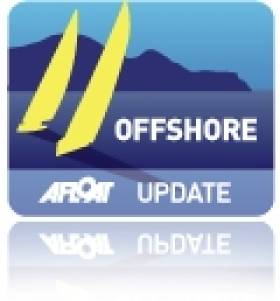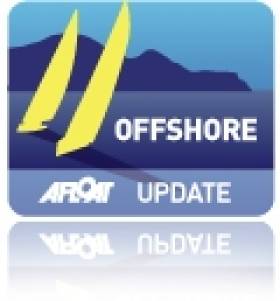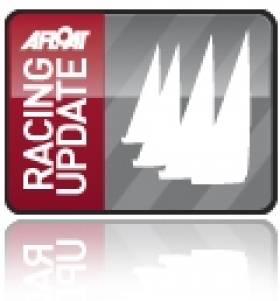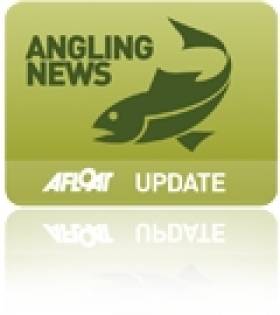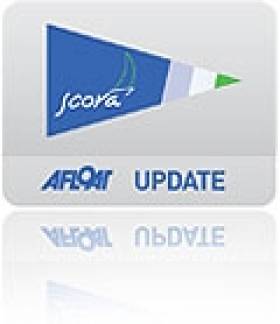Displaying items by tag: Offshore
#ISORA – Welsh J109 Sgrech starts as clear favourite for this Saturday morning's offshore race from Pwllheli to Wicklow, the last qualifying race for this year's Round Ireland yacht race. As an added bonus this race is for a new ISORA trophy from race sponsor Lynxmetmasts.
The 2003 built J109 skippered by Stephen Tudor has already won two of the three ISORA races this season. The 18-boat fleet is expected into Wicklow late on Saturday afternoon in this the fourth race of the ISORA programme.
The suggested course for the race is available to download as an attachment below but the actual course will only be decided on Friday and will be texted and emailed to all competitors. Also available to download is the entry list and local tidal info.
Arklow Club Cancels Round Windmills Race
#TURBINES RACE – A clash of offshore fixtures has led Arklow Sailing Club to cancel its fourth race round the Windmills on the Arklow bank on the East coast of Ireland that had been slated for June 3rd.
The race would have followed the ISORA race on Sunday, June 3rd and had attracted a good following on recent stagings. The 34-mile race is open to IRC and ECHO classes as well as white sail fleets but with ISORA and Round Ireland race taking a priority the Arklow Race Committee want to 'make it an event that will happen in the odd years so there are less clashes', according to a club spokesman this morning. The next race therefore will take place in 2013 at a date still to be advised.
#ISORA – Due to tide restrictions the start time of the third ISORA offshore race of the season from Conwy in North Wales to Howth in North Dublin has been delayed until 09.30 am next Saturday to allow boats to exit Conwy marina and get to the Fairway Buoy start line. The aim is also allow to boats get past the Skerries before the tide turns on the 100-mile long course.
The course may include 'Virtual' marks'. These are coordinates of a position that each yacht must round.
ISORA racing is on a high in 2012 with 18 boat turnouts for the races from Dun Laoghaire to both Wicklow and Holyhead. J109 yachts have established a strong showing to date with Stephen Tudor's Welsh based Sgrech, the latest winner in the race to Holyhead
Next weekend evidence of rounding the 'virtual' mark must be taken and may be requested by the Race Officer. The evidence may include photographic (iPhone or similar) evidence of the yacht's GPS showing its position at the mark. Yacht's chart plotter track showing the yacht rounding the "virtual" mark. This must be transmittable to ISORA by email. The onus of proof of having rounded the "virtual" mark will be with each yacht.
Sailing instructions for race three are downloadable below in pdf format.
#OFFSHORE – A number of significant announcements for Irish offshore sailing are expected at tonight's launch of the Round Ireland yacht race in Wicklow Sailing Club including a number of key international entries for June's 704-mile race. Already a strong entry from the UK has been received.
ISORA Commodore Peter Ryan will also announce a new title sponsor Lynx Metmasts for the Irish Sea Race from Pwllheli to Wicklow, a race in ISORA's 2012 programme. It is hoped that the weather will allow the course to be around the Arklow bank wind turbines when it sets sail on June 2nd, just three weeks before the start of Ireland's biennial offshore classic. Lynx Metmasts MD, Michael Martyn will present a perpetual trophy to the overall winner at Wicklow Sailing Club.
Meanwhile Arklow Sailing Club's fourth race round the Windmills will follow the ISORA race on Sunday, June 3rd. The 34-mile race is open to IRC and ECHO classes as well as white sail fleets.
J109 Yachts Revel in Strong Wind ISORA Race to Arklow
#OFFSHORE – The stable, easy to sail and performance attributes of the J109 came to the fore in a blustery start to the ISORA season on Saturday, the Rod Johnstone design taking the top two places overall in the 18-boat fleet. Photos from yesterday's start below plus full results in pdf format for download.
Racing in between gale forecasts the first race of the season from Dublin Bay to North Arklow and back was won by top DBSC performer John Maybury's J109 from the Royal Irish Yacht Club. Joker 2 beat 36–foot sistership Jedi skippered by offshore campaigner Andrew Saratt by a three minute corrected time margin.
Despite strong north-easterly winds, 18 boats (and a good cross section of sailing cruisers some drawn from the ranks of the local bay fleet), came to the Scotsman's bay start line from an entry list of 23 at 10.00am. The conditions were not as bad as last Tuesday when even trawlers found the going tough on the east coast but there was nevertheless a good sea running.
The 42–mile course took the fleet around South Burford and against the tide to North India. In the very lumpy seas around Codling Bank the fleet beat out to East Codling before turning to the finish.
Absent from the first race was Irish Sea champion Matt Davis' Sigma 400 Raging Bull. The 'Bull' is the ISORA Champion for 2010 and 2011 but was damaged last week during the north-easterly storms when moorings failed in Skerries in big seas and the yacht was blown onto rocks. Davis is hoping to get the boat repaired and to defend his title.
The second ISORA race is on Saturday 5th May, the 60–mile Round Ireland Yacht Race qualifier race from Dun Laoghaire to Holyhead where some some new additions to the ISORA fleet are expected into the race.

Run in conjunction with the Royal Alfred Yacht Club racing was started by RAYC Commodore, Barry MacNeaney

Irish Offshore Sailing's Desert Star was the winner of the Silver fleet

Dinah, Barry Hurley's double-handed Jeanneau was third in the race from Dun Laoghaire to Arklow

Big seas on the way to Arklow for 18 yachts competing in the first ISORA of the season. More ISORA fleet photos below.
#OFFSHORE – 18 boats are expected on the line tomorrow morning for the start of the first ISORA offshore sailing race of the 2012 programme.
A split for Class 1 and Class 2 will be made but not until the morning and is subject to final entries.
15-20 knots of wind from the north east is expected and the above course is proposed.
The tide will be flooding for most of the race and as the fleet will most liklely avoid Wicklow Head in such circumstances the plan is to round North India instead of North Arklow buoy.
The course is 47 miles long, a route that should give two beats and loads of reaching and runs and return most boats to ISORA HQ at the National YC for results and a 'dry sherry' for 6pm.
Confirmation of the course will be given at the briefing on Saturday at 08.45 at Dun Laoghaire marina. It will also be broadcast on VHF Ch72 soon after. Boats are expected to return to Dun Laoghaire by 6pm.
#OFFSHORE – As the days get longer thoughts are turning to offshore sailing again and as Irish Sea Offshore Racing Association (ISORA) Commodore Peter Ryan writes 2012 promises to be a great year not just because it is Round Ireland year but because there are new and exciting things happening in ISORA.
We will be visiting Conwy and Keith Manders has already arranged a great social event on the Friday evening. We will be using the "virtual marks" that will ensure that there is a "corner" in every race. The schedule provides for feeder races to the ICRA Championships in Howth in May and Abersoch Keelboat Week in August. We will also be providing qualifying races for the Round Ireland.
I attach the Conditions, NoR and Entry Form for 2012. As we will be running a Silver Fleet it would be great to have some idea of likely entries as soon as possible. We are finalising Online Entry using PayPal for ISORA. We hope to have this complete next week. We hope this will make it handier to enter races.
I have now put all the ISORA trophies back into circulation and I hope that we can increase fleet numbers, populate the Sliver Fleet and ensure a better spread of trophies in 2012.
As I did last year, I will be coordinating a Crew Available list again this year. Anyone who does not have a place on a boat should complete the Excel sheet attached, indicating their availability for selected races. I am already aware of crew of all levels of experience who are looking for places on boats.
I hope as many of you as possible take part in ISORA in 2012 . Please do not hesitate to contact me if you have any queries on ISORA. I would also appreciate if you could promote ISORA within your Club – Peter Ryan
ISORA Race Programme 2012
28th April - ISORA / RAYC / Lee Overlay Day Race - (50 miles)
Dun Laoghaire to Nt. Arklow Cardinal
5th May - ISORA Offshore - Dun Laoghaire to Holyhead (60 miles)
Qulaifying Race
19th May - ISORA Offshore - Conwy to Howth (100 miles)
Qulaifying Race
2nd June - ISORA Offshore - Pwllheli to Wicklow (100 miles)
Qulaifying Race
14th July - ISORA Day Race – Pwllheli day race (35 miles)
27th July - ISORA / RAYC / Lee Overlay Night Race - (35 miles)
Dun Laoghaire to Nt. India Qulaifying Race
18th August - ISORA Offshore - (75 miles) Qulaifying Race
Dun Laoghaire – Pwllheli (T.B.C)
1st September - ISORA / RAYC / Lee Overlay Day Race - (54 miles)
Dun Laoghaire to M2
8th September - ISORA Day Race - Pwllheli day race ( 35 miles)
15th September - ISORA Offshore - Pwllheli to Dunlaoghaire. (80 Miles)
James Eadie Race – Qulaifying Race
Overall Series: To win the overall ISORA series for the Wolf's Head Trophy boats must complete 2 of the 6 "Qualifying". Points for the overall series will then be taken from the best 5 results. Prizes will be awarded for a separate series to include all races in the schedule.
N.B. - All races will have a weighting applied.
Ailsa Craig Race Celebrates 50th Anniversary
#RACING UPDATE - This summer the Royal Ulster Yacht Club will stage the 50th anniversary edition of the Ailsa Craig Race, one of the classics of the Northern Ireland offshore yacht racing calendar.
Many of the competitors from the inaugural race in 1962 - several of whom are now in their 80s - are expected to compete in the overnight challenge, which takes the fleet from Bangor to the rock at the mouth of the Clyde in Scotland.
The 2012 Ailsa Craig Race, sponsored by Hamilton Shipping, takes place on 15 June.
NI Anglers Take to Facebook to Save Their Salmon
#ANGLING - Northern Ireland river anglers are taking a novel approach to lobbying Stormont over salmon exploitation by harnessing the power of social networking.
According to the News Letter, the NoSalmonNets campaigners "have swapped their fishing rods for laptop computers", using Facebook to attract support for their campaign to bring an end to the offshore netting of wild salmon stocks.
As previously reported on Afloat.ie, Northern Ireland's Department of Culture, Arts and Leisure (DCAL) has called for a voluntary ban on offshore salmon fishing, following new research that shows a significant drop in their numbers in the North's rivers.
Seamus Donnelly of NoSalmonNets has welcomed DCAL's recent decision to stop issusing licences for commercial salmon nets that may "contravene European law" off Antrim's north coast, made in an effort to protect salmon stocks in the Foyle river system.
Donnelly explained that the campaign was borne from frustration at the apparent inaction by the NI Executive over the protection of salmon.
“One of the keys to our success has to be Facebook," he said. "The internet has an unlimited reach and we took advantage of that.”
The News Letter has more on the story HERE.
O'Shea Urges Good Turnout for SCORA
#OFFSHORE – Commodore Vinnie O'Shea is urging offshore sailors to turn out in good numbers when the 2012 South Coast Offshore Racing (SCORA) programme returns to its more traditional format this season writes Claire Bateman. The Jim Donegan Offshore Championship (IRC and ECHO) will be awarded to the overall winner of the series based on 'ALL IN' results.
This competition will commence on May 31st with the Crosshaven-Milford Haven Race, an event that SCORA's Martin Darrer has been organising.
The Championship will also consist of the Kinsale-Fastnet-Kinsale race on June 8th, the Gas Rigs Race on July 31st, Crosshaven-Schull August 3rd and Fastnet Race-Calves Week August 9th.
The SCORA League will include all races in the Kinsale YC Spring Series, the Cobh to Blackrock Race and all races in the Royal Cork YC Autumn Regatta.
Commodore Vinnie O'Shea is urging a good turnout for a season that promises excellent sailing with a variety of courses and venues and hopefully wind and sun to be included in abundance.




























